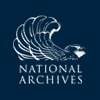Andrew Ellicott to Thomas Jefferson, 6 October 1805
From Andrew Ellicott
Lancaster October 6th. 1805.
Dear Sir
I have lately received from the national institute of france the documents collected by order, and under the direction of that body, respecting the falling of stones from the atmosphere:—the fact is certainly established;—and from the fact we must search for the theory.—These stones appear to be formed by a simple aggregation of the component parts, and not by an intimate combination:—all the parts by a careful analysis appear to be common to this earth.—The materials I presume were floating in the atmosphere, and collected, and brought into contact by some chemical operation with which we are yet unacquainted;—but in which the meteor from which the stones fell was the principal agent.—That such materials are to be met with in our atmosphere is very probable, and Lavoisier expressly says,—“qu’il seroit pas par conséquent impossible qu’il se rencontrât dans notre atmosphère des substances extrêmement compactes, des metaux même, & qu’une substance metallique” &c.—
From the following extract, from the journal of the institute, it will appear that the phenomenon of stones falling from the atmosphere has not been so uncommon as generally supposed.—“M. Izern avait parlé des pierres qui tombèrent le 16 juin 1794, à sept lieus au sud-est de Sienne en Toscane, et sur lesquelles il y a un livre interessant: Sopra una piogetta di sassi accaduta nella sera de’ 16 guigno 1794, dissertazione del P.D. Ambrogio Soldani, in Siena 1794.—Il en tomba 40 ou 50 sur un mille de distance; elles étaient chaudes et brûlées à la surface, semblables à celles d’Ensishem, 7th. novembre 1492; de Bourg en Bresse septembre 1753; d’Agen, 24th. juillet 1790; du comté d’Yorck, decembre 1795; de Salles près Ville-Franche en Beaujolois, 12 mars 1798; de Benarès decembre 1798.—
If you have not yet received the documents before mentioned, I can conveniently send you mine, as it is yet in the pamphlet form, and after perusing it, you can return it by the mail.—
I have the honour to be with great esteem, and regard your friend and hble. sert.
Andw. Ellicott
P.S. the re-election of Mr. McKean is now reduced to a certainty.
A. E.
RC (DLC); at foot of text: “Thos. Jefferson President of the U.S.”; endorsed by TJ as received 10 Oct. and so recorded in SJL. PrC (DLC: Ellicott Papers).
The documents collected by order included Jean Baptiste Biot’s description of the meteorite falling on the town of l’Aigle. John Wheatcroft, Sr., had previously translated Biot’s pamphlet and forwarded the report to TJ (Jean Baptiste Biot, Relation d’un voyage fait dans le département de l’Orne, pour constater la réalité d’un météore observé à l’Aigle le 26 floréal an 11 [Paris, 1803]; Vol. 41:430–2).
The quotation from Antoine Lavoisier, which appeared in his textbook on elementary chemistry, states “that it would not be impossible therefore to find in our atmosphere extremely compact substances, even metals” (Antoine Lavoisier, Traité élémentaire de chimie, présenté dans un ordre nouveau, et d’après les découvertes modernes, 2 vols. [Paris, 1789], 1:31).
The extract appeared under the heading “Sur les Pierres de l’Atmosphère.” It stated that Joseph Izarn “had spoken of the stones which fell on 16 June 1794, seven leagues southeast of Siena in Tuscany, and about which there is an interesting book, Sopra una pioggetta di sassi accaduta nella sera de’ 16 giugno del 1794, the dissertation of Ambrogio Soldani at Siena in 1794. Forty or fifty fell over a distance of a mile; they were hot and scorched on the surface, similar to those of Ensisheim, 7 November 1492; Bourg-en-Bresse, September 1753; Agen, 24 July 1790; Yorkshire, December 1795; Salles near Villefranche in Beaujolais, 12 March 1798; and Benares, December 1798” (Connaissance des tems, Year 14 [1804], 450-2).

![University of Virginia Press [link will open in a new window] University of Virginia Press](/lib/media/rotunda-white-on-blue.png)
